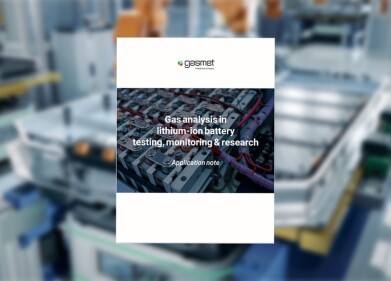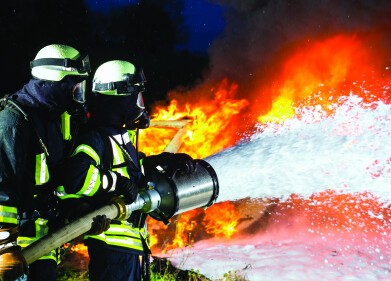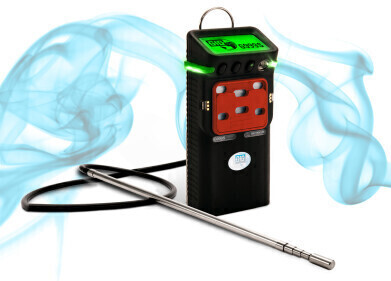Health & Safety
Get your H2 detection right from the start
Oct 12 2021
Hydrogen is the "IT-Girl" of the gas industry. Many hopes for a green future are associated with this energy source. Even so, its importance will likely increase in the future, H2 is not something new in industrial processes, nor is the need to monitor it closely. Hydrogen is already extremely common in many industrial settings including refineries, chemical plants, power stations, gas plants, and areas where batteries are being charged. Emerging energy related use of H2 makes this gas even more important from a monitoring standpoint.
Sometimes hydrogen is measured by means of a dedicated fixed gas detection system, where gas measurement transmitters are installed throughout the facility, and sound the alarm if there is a sudden leak or increase twenty-four hours a day. Sometimes the hydrogen is measured by means of portable single or multi-sensor instruments.
While the choice of the right transmitter or portable device is primarily determined by the requirements on site (i.e. Ex zones), the choice of the right sensor technology often depends primarily on the application and the measuring range required. Hydrogen can be measured by means of catalytic type percent LEL combustible gas sensors, or by means of substance-specific electrochemical sensors.
Catalytic LEL sensors detect gas by oxidizing or “burning” the gas. They require the presence of oxygen in order to detect gas. Standard catalytic LEL sensors cannot detect gas if the atmosphere contains too little oxygen. Most of the time measurements for combustible gas are given in percent LEL (% LEL). The reading provides a comparison of the measured concentration against the LEL concentration of the gas used to calibrate the sensor. Catalytic LEL sensors have a higher response to hydrogen than to propane, pentane, and most other gases. When you calibrate the sensor to hydrogen you need to make sure that the alarms are set appropriately for other gases that might be present. The converse is true as well. Deciding which combustible gas or “scale” to use when you calibrate the sensor is an important issue.
Not all types of LEL sensors can detect hydrogen. Infrared LEL sensors are increasingly popular for use in compact portable multi-sensor instruments. While IR LEL sensors have many advantages, they cannot detect hydrogen, because H2 does not absorb IR light. If hydrogen is potentially present, it is important to include an electrochemical (EC) H2 sensor along with the IR LEL sensor.
Electrochemical sensors use a substance-specific chemical reaction that causes a change in the electrical output of the sensor that is proportional to the concentration of the measured gas. The electrochemical hydrogen sensors in GfG instruments can be used for extended periods of time to measure H2 in oxygen free atmosphere. Substance-specific electrochemical (EC) sensors read in percent volume or parts-per-million (ppm) units. GfG offers several different versions of electrochemical hydrogen sensors for different applications.
Feel free to contact GfG anytime if you have question on how to protect your facility or plant in the best way from the hazards of hydrogen.
Digital Edition
IET 34.2 March 2024
April 2024
Gas Detection - Biogas batch fermentation system for laboratory use with automatic gas analysis in real time Water/Wastewater - Upcycling sensors for sustainable nature management - Prist...
View all digital editions
Events
Apr 30 2024 Melbourne, Australia
Apr 30 2024 Birmingham, UK
May 03 2024 Seoul, South Korea
May 05 2024 Seville, Spain
May 06 2024 Minneapolis, MN, USA
-H2-Gas-Station.jpg)
-EC22.jpg)
-CC33.jpg)

















